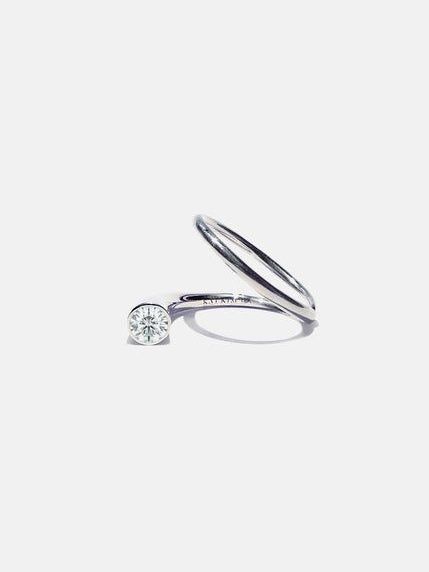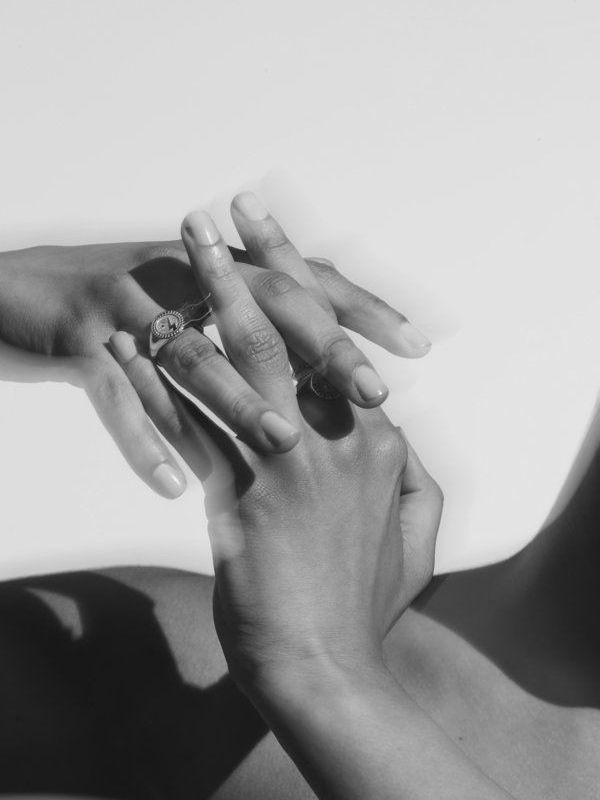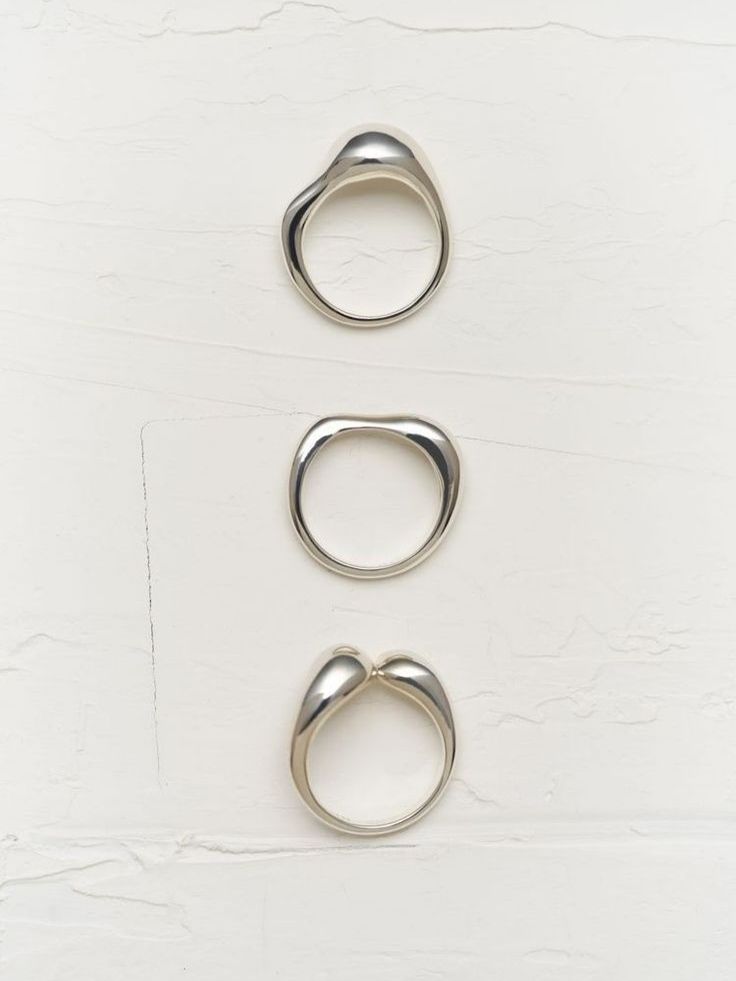Platinum vs. White Gold: Key Differences
- Author: Natali Grace Levine
- Reading time: 5 min 47 sec
- Publication date: 11/01/2024
- Updated: 01/07/2025
- Choosing the Perfect Metal for Your Rings: Platinum vs White Gold
- What Is Platinum?
- What Is White Gold?
- Platinum vs White Gold: Durability and Wear
- Platinum vs White Gold: Cost Considerations
- Platinum vs White Gold: Color and Appearance
- Platinum vs White Gold: Comfort and Weight
- Platinum vs White Gold: Hypoallergenic Properties
- Platinum vs White Gold: Resale Value and Long-Term Investment
- Which Metal is Right for You?
Choosing the Perfect Metal for Your Rings: Platinum vs White Gold
When it comes to selecting a metal for engagement rings or wedding bands, couples often face a critical choice: Platinum vs White Gold. At first glance, platinum and white gold can look nearly identical. However, the differences between these two metals are substantial and can affect the look, durability, maintenance, and even the budget of your ring. In this article, we’ll dive into the core characteristics of platinum and white gold, discuss their pros and cons, and help you decide which metal suits you best.



What Is Platinum?
Platinum is a precious metal known for its durability, resistance to wear, and unique silvery-white luster. Unlike white gold, platinum does not require additional coatings to achieve a brilliant white color, as it is naturally white. Platinum is one of the most valuable metals due to its rarity and durability, so platinum rings are typically more expensive than those made of white gold.
Key Characteristics of Platinum:
- Naturally white color that doesn’t fade
- Dense and heavy, giving rings a substantial feel
- Highly resistant to scratches and wear
- Requires occasional polishing to maintain shine but is low-maintenance overall




What Is White Gold?
White gold, unlike platinum, is an alloy created by mixing pure gold with other metals such as nickel, palladium, or silver. These metals give white gold its silvery color and make it more durable than pure gold. After forming the alloy, white gold rings are often coated with rhodium to enhance their shine and whiteness. However, over time, the rhodium plating can wear off, requiring re-plating to keep the ring looking bright.
Key Characteristics of White Gold:
- Not naturally white; it has a slight yellowish tint without rhodium plating
- Lighter and often less expensive than platinum
- More prone to scratches and requires occasional maintenance
- Rhodium plating will need to be refreshed every few years to maintain its color




Platinum vs White Gold: Durability and Wear
One of the biggest distinctions between Platinum vs White Gold is their durability. Platinum is much denser than white gold, which makes it heavier and more resistant to everyday wear. When platinum scratches, it doesn’t lose metal as gold does; instead, it displaces the metal, forming a patina finish over time that many wearers find appealing. This patina can be polished out if you prefer a high-gloss look, but many appreciate the vintage charm of a worn platinum band.
In contrast, white gold can be more susceptible to scratches and may wear down slightly over the years, especially in high-traffic areas. Rhodium-plated white gold will eventually lose its plating, meaning it may need replacing every few years to retain its bright white appearance.If you’re looking for a low-maintenance option that’s built to withstand the test of time, platinum is the superior choice. White gold, while durable, will require more upkeep to maintain its pristine appearance.




Platinum vs White Gold: Cost Considerations
Cost is a critical factor for many couples when choosing between Platinum vs White Gold. Due to its rarity, platinum is more expensive per gram than gold. Additionally, since platinum is denser, a platinum ring will weigh more than an equivalent white gold ring, further increasing the cost. For those on a budget, white gold can offer a similar look to platinum at a lower price, especially for larger rings or complex designs.
However, it's essential to consider the ongoing maintenance costs associated with each metal. White gold will likely require periodic re-plating, adding to the lifetime cost of the ring. With platinum, there may be a higher initial cost, but minimal maintenance costs in the long run.White gold is generally the better option for those with a limited budget, but keep in mind the potential for maintenance expenses over time.
Platinum vs White Gold: Color and Appearance
Both platinum and white gold can give a beautiful, white-metal appearance, but there are some nuances in color and appearance to consider. Platinum vs White Gold can yield different tones; platinum is naturally white, while white gold has a slight yellowish hue due to the natural color of gold. This means that white gold relies on rhodium plating to achieve its bright white color. Over time, the rhodium plating on white gold can wear away, revealing a warmer tone. This can be restored by re-plating the ring, but it’s an additional maintenance consideration.
Platinum, on the other hand, will retain its natural white color indefinitely and won’t need re-plating. It may develop a soft patina finish over time, which can give it a vintage, aged look that many find appealing. However, this patina can be polished out for those who prefer a high-gloss appearance.If you prefer a metal that maintains its white color without needing extra maintenance, platinum is the ideal choice.
Platinum vs White Gold: Comfort and Weight
Platinum vs White Gold also differs in weight. Platinum is denser than white gold, which means it is a heavier metal. Some people appreciate the substantial feel of a platinum ring, while others may find it slightly uncomfortable, especially for larger rings. White gold, being lighter, may be more comfortable for everyday wear, particularly for individuals not used to wearing jewelry.
However, platinum’s weight contributes to its durability and long-lasting quality, so it’s a matter of preference. If you’re drawn to the feeling of a solid, heavy ring, platinum might be a great choice. If you prefer something lightweight and discreet, white gold could be more suitable.For those who prioritize a lighter ring, white gold is generally more comfortable, but some may enjoy the weightiness of platinum as a sign of its durability.




Platinum vs White Gold: Hypoallergenic Properties
One of the deciding factors in Platinum vs White Gold for many people is hypoallergenic properties. Platinum is a hypoallergenic metal, making it an excellent choice for individuals with sensitive skin or metal allergies. Pure platinum is less likely to cause skin reactions than white gold, which often contains nickel—a common allergen. While white gold can be alloyed with metals like palladium for a more hypoallergenic option, platinum remains the safest choice for those with known sensitivities.For anyone concerned about allergies, platinum is the superior choice due to its hypoallergenic nature.

Platinum vs White Gold: Resale Value and Long-Term Investment
When it comes to long-term value, Platinum vs White Gold leans in favor of platinum, as it generally holds its value better. This is due to platinum’s rarity and purity; platinum rings are typically composed of 90-95% pure platinum, whereas white gold is mixed with other metals. As a result, platinum can be a better investment over time, potentially offering a higher resale value.For those considering the long-term investment aspect, platinum is often the more valuable choice.




Which Metal is Right for You?
Choosing between Platinum vs White Gold ultimately comes down to personal priorities:
- If you value durability, low maintenance, hypoallergenic properties, and long-term investment, platinum is likely the best choice for you.
- If you prefer a lighter, more affordable option with a bright white finish, white gold could be the ideal choice, especially if you’re comfortable with periodic maintenance.
Whether you choose platinum or white gold, each metal offers unique advantages that can enhance the look and feel of your engagement ring or wedding band. Consider your lifestyle, aesthetic preferences, and budget to select the perfect metal that will represent your commitment and style for years to come.






















